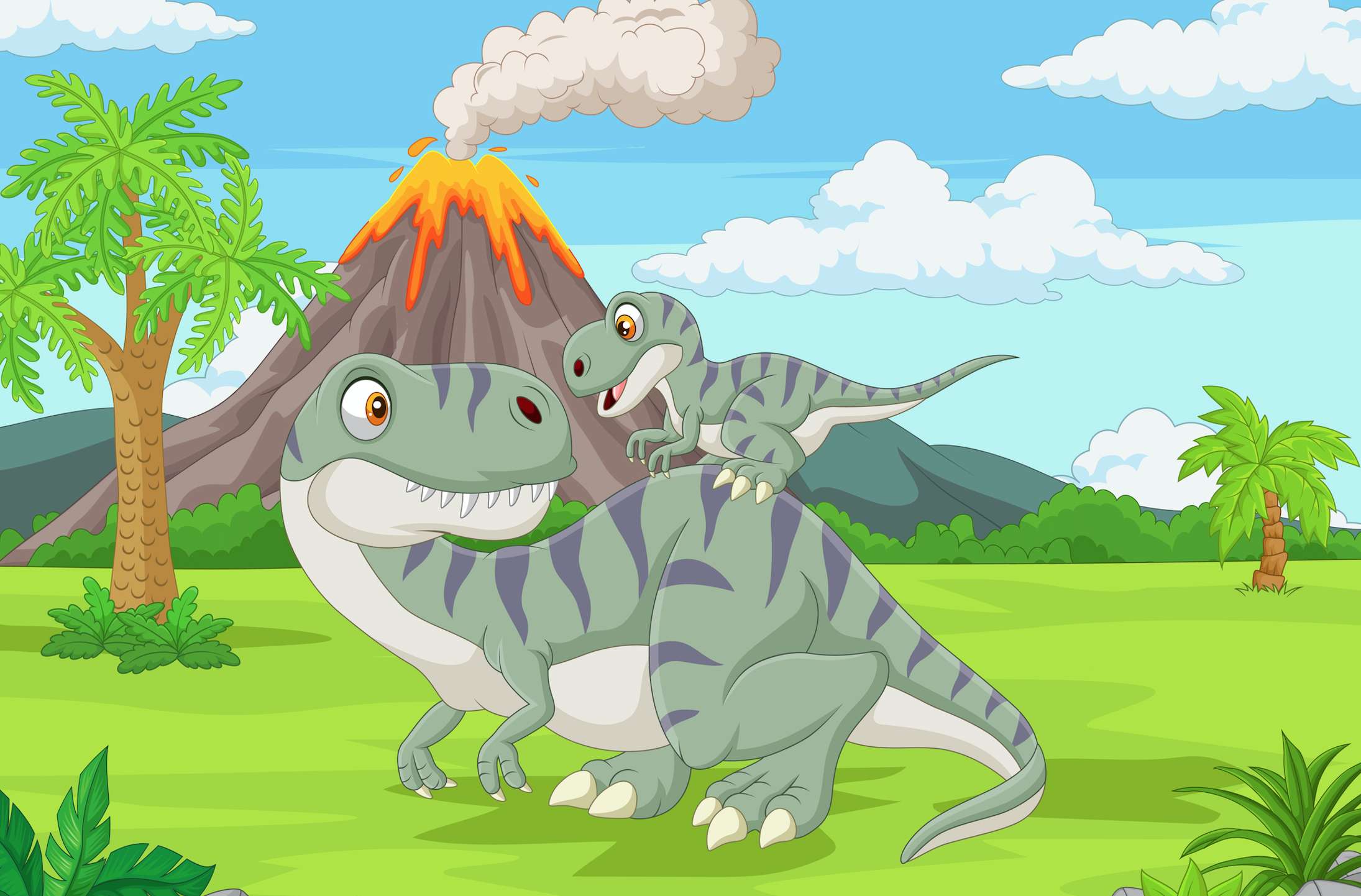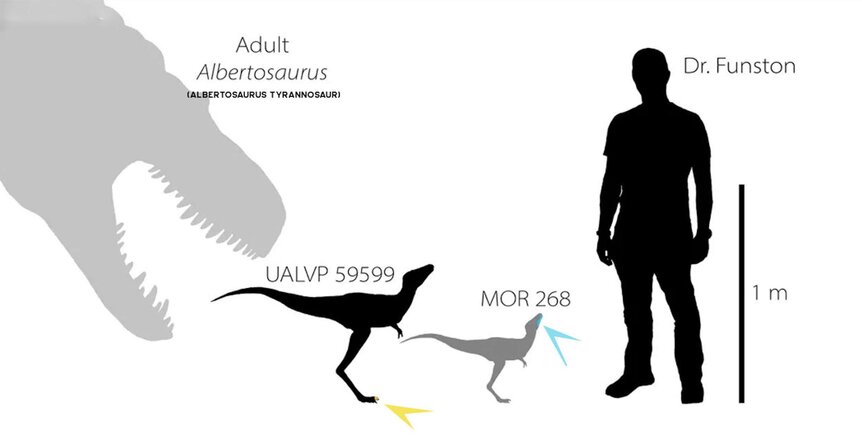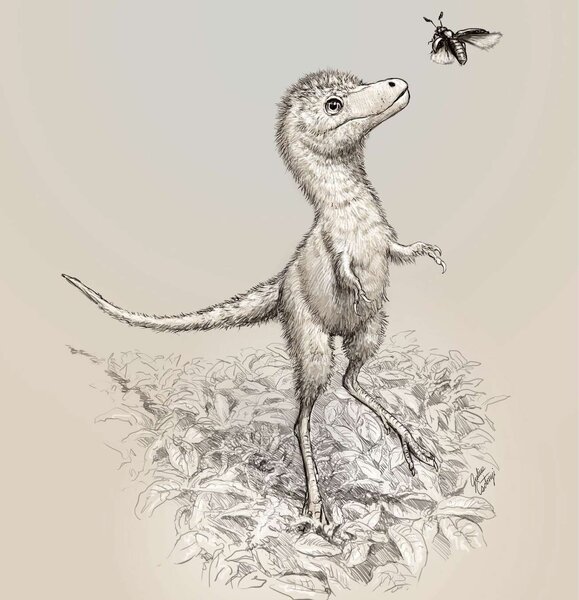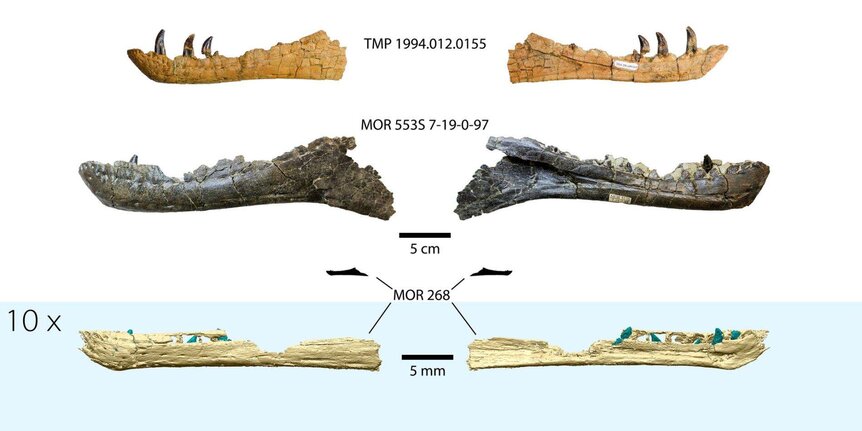Create a free profile to get unlimited access to exclusive videos, sweepstakes, and more!
Paleontologists unearth first baby tyrannosaur fossils and the infant terror was tiny

Sure it's cute, but watch your fingers because this prehistoric tyke bites!
Embryonic fossils of baby tyrannosaurs that would have still been in their protective eggs were recently identified at various North American fossil sites and represent the first known unborn specimens of the long-tailed infant predators that were no bigger than an average terrier.
The diminutive foot claw and lower jaw both date back to the Cretaceous period, approximately 71 to 75 million years ago during the Golden Age of tyrannosaurs, when these intimidating meat-eaters reigned supreme.
Details were revealed online last week by University of Edinburgh paleontologist Gregory Funston during the organization's annual Society of Vertebrate Paleontology gathering.
The baby's tiny claw was discovered two years ago at a Canadian excavation site at the Horseshoe Canyon Formation within Alberta's First Nation lands. A miniature jaw was also unearthed on indigenous land at the Two Medicine Formation of Montana in 1983.
Back when these bones were initially found, it was unclear exactly what the importance of the fossils were, as is often the case in the labor and research-intensive field of paleontology. The critical consensus at the time was that these specimens were not related to tyrannosaur, but some other species.
Funston was a graduate student in Alberta investigating the toe claw's identity when his faculty advisor, Philip Currie, brought him the chunk of mini mandible embedded in stone, which was similar to the jaws of officially catalogued tyrannosaurs. 3D scans and careful reconstructions confirmed it was from the tyrannosaur family, but a species that existed earlier than T-rex.
“I wasn’t convinced that it was a tyrannosaur at all,” Funston says.“We knew then that we had a chance to learn a lot about baby tyrannosaurs, which had been entirely mysterious until then.”
The vast majority of excavated tyrannosaur fossils are comprised of fully grown or older juvenile creatures, not babies or adolescents.
Theoretical reconstructions and paleoartist illustrations have been created of toddler tyrannosaurs, but paleontologists had no life-based clues to go on besides pure speculation and inference. Now the revelations this little toe and jaw deliver let professionals in the field finally go back to review fossil records with their hypothetical models.
These newly identified fossils show that tyrannosaur babies were extremely small and roughly one-tenth the size of mature beasts, compared to their gigantic 20-foot-tall parents. The aforementioned jaw belonged to a tyrannosaur that measured two-and-a-half feet long, and the shrunken toe claw was once attached to a carnivorous creature just over three feet long.
Furthermore, embryonic tyrannosaurids give scientists clues as to not only the size of an infant, but also the size of the eggs they would eventually hatch from. Based on the size of the embryos, researchers believe these pint-sized tyrannosaurs slumbered in eggs measuring 17 inches long.
“Considering that we found both of the embryonic bones at localities where we’ve found embryonic bones of other kinds of dinosaurs, it gives us a good clue that tyrannosaurs were nesting in the same areas as other species," added Funston, whose team plans to hunt for more primeval baby bones at those specific dig sites in Canada and Montana.
“Hopefully these new bones will help to refine the search for additional fossils. We’ve barely scratched the surface at these sites, and we’re finding more each year.”





























